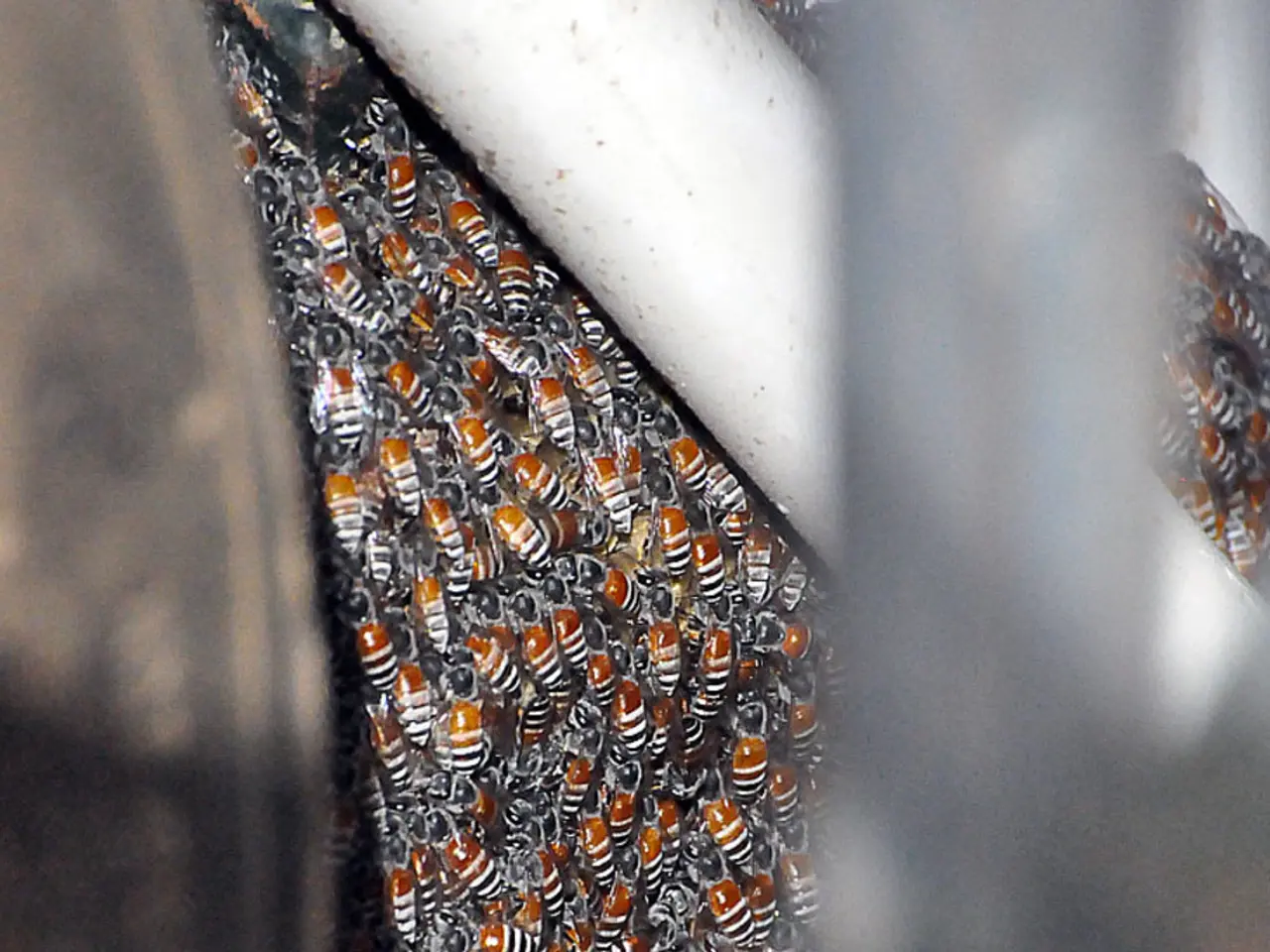Wasp Sting Relief: Discovering Effective Solutions for Pain Reduction
In the warmer months, insect stings can become a common occurrence. Here's a comprehensive guide on how to identify and treat stings from bees and wasps, as well as some home remedies to help alleviate the discomfort.
First and foremost, if you suspect a sting, check your skin for a stinger. The presence of a stinger is a tell-tale sign of a bee or wasp sting.
In case of a sting in the mouth or throat, breathing difficulties may occur due to swelling. In such emergencies, suck on an ice cube or apply a cold compress to the neck until help arrives.
For immediate treatment, remove the stinger carefully by scraping it out with a fingernail or a piece of gauze. Avoid squeezing the skin. After removing the stinger, wash the area gently with soap and water.
To help reduce pain and swelling, apply a cold compress or ice pack wrapped in a cloth for 10–20 minutes. Over-the-counter pain relievers like ibuprofen can also help relieve pain.
Watch for allergic reactions, such as hives, facial swelling, or difficulty breathing, and seek emergency care if these occur. Around 2-3% of people in Germany have an insect venom allergy, and such reactions can lead to life-threatening breathing difficulties or circulatory problems, especially if it's the first time.
For home remedies, consider the following options:
- Applying a baking soda paste can help neutralize venom acidity, reduce itching, and inflammation due to its alkaline properties.
- Aloe vera soothes and moisturizes inflamed skin, while witch hazel offers anti-inflammatory and antiseptic effects.
- Apple cider vinegar is noted for its ability to neutralize venom due to its acidity.
Regarding onion applications, while it is sometimes suggested as a home remedy for insect stings, it can cause skin irritation or burning if left on the skin too long or applied in concentrated form. To prevent irritation, use a freshly cut slice or a diluted form rather than raw onion juice directly. Apply for a short duration (a few minutes) and rinse off thoroughly with water afterward. If skin begins to burn or shows redness beyond normal sting reaction, discontinue use immediately.
In summary, start immediate care by removing the stinger, cleaning, and applying cold; soothe symptoms with baking soda paste or aloe vera; and prevent skin irritation from onion by limiting exposure, diluting, and rinsing well. Monitor for allergic reactions and seek professional care if severe symptoms arise.
In case of suspected allergic shock due to an insect sting, call the emergency number 112.
- In the realm of workplace-wellness and health-and-wellness, it's essential to understand different therapies-and-treatments for bee or wasp stings to ensure quick recovery.
- Fitness-and-exercise plays a significant role in maintaining good mental-health, but it's equally important to address physical issues like bee or wasp stings promptly.
- A skincare routine incorporating home remedies, such as a baking soda paste or aloe vera, can aid in reducing sting discomfort while also being beneficial for overall skin health.
- Proactively educating oneself about these home remedies and knowing when to seek professional help, such as in cases of suspected allergic reactions from insect stings, is crucial in ensuring proper treatment.




